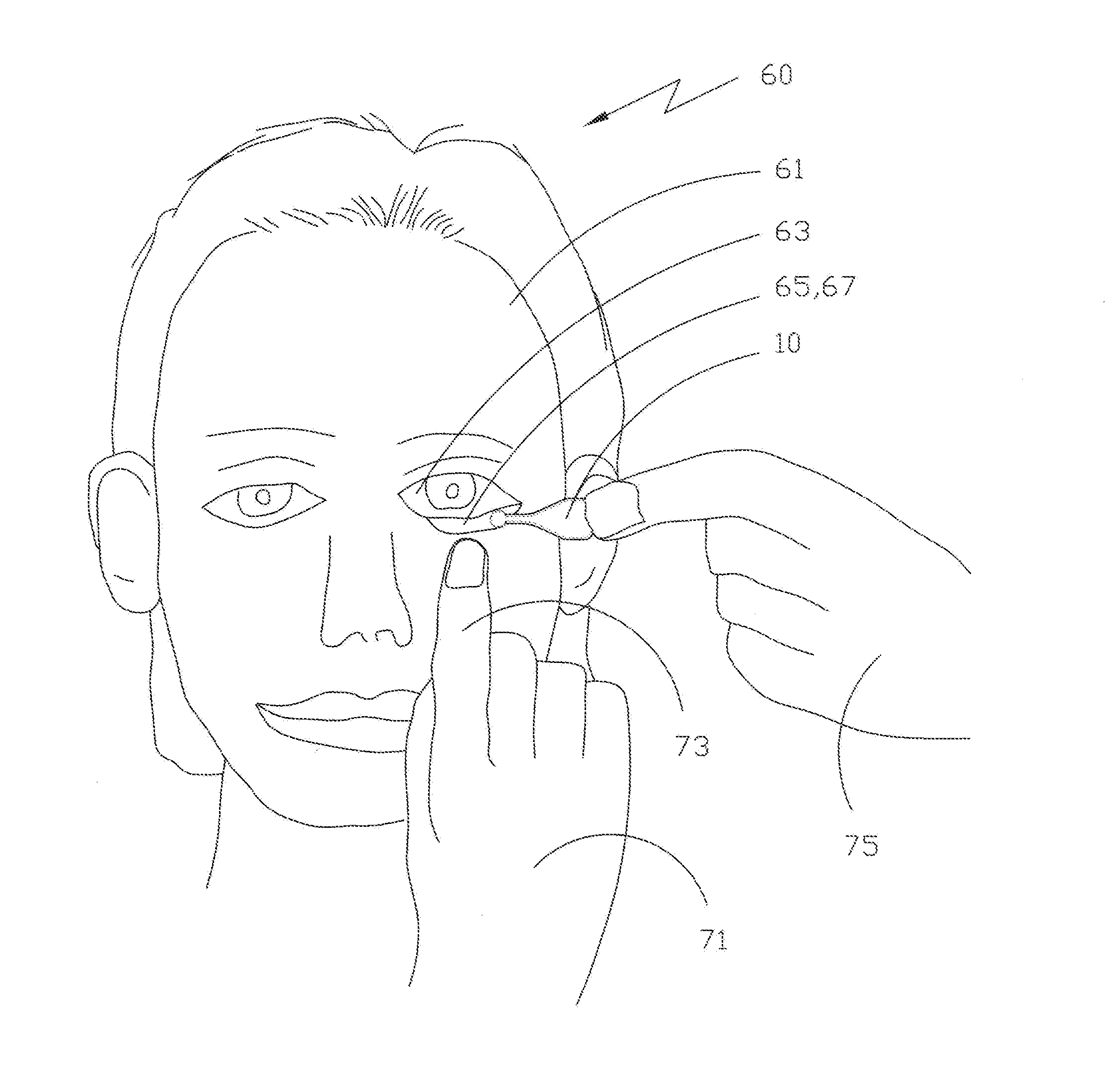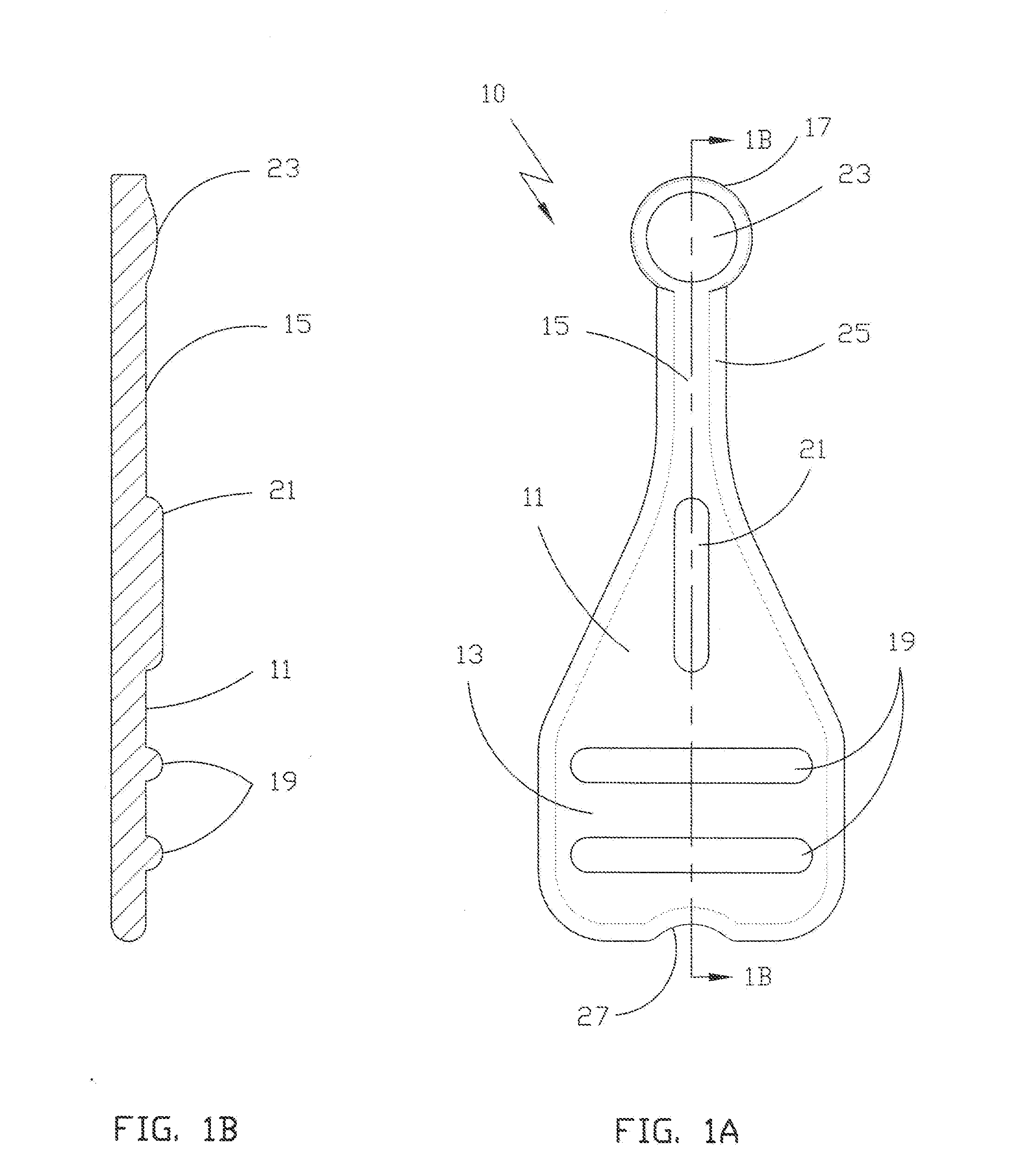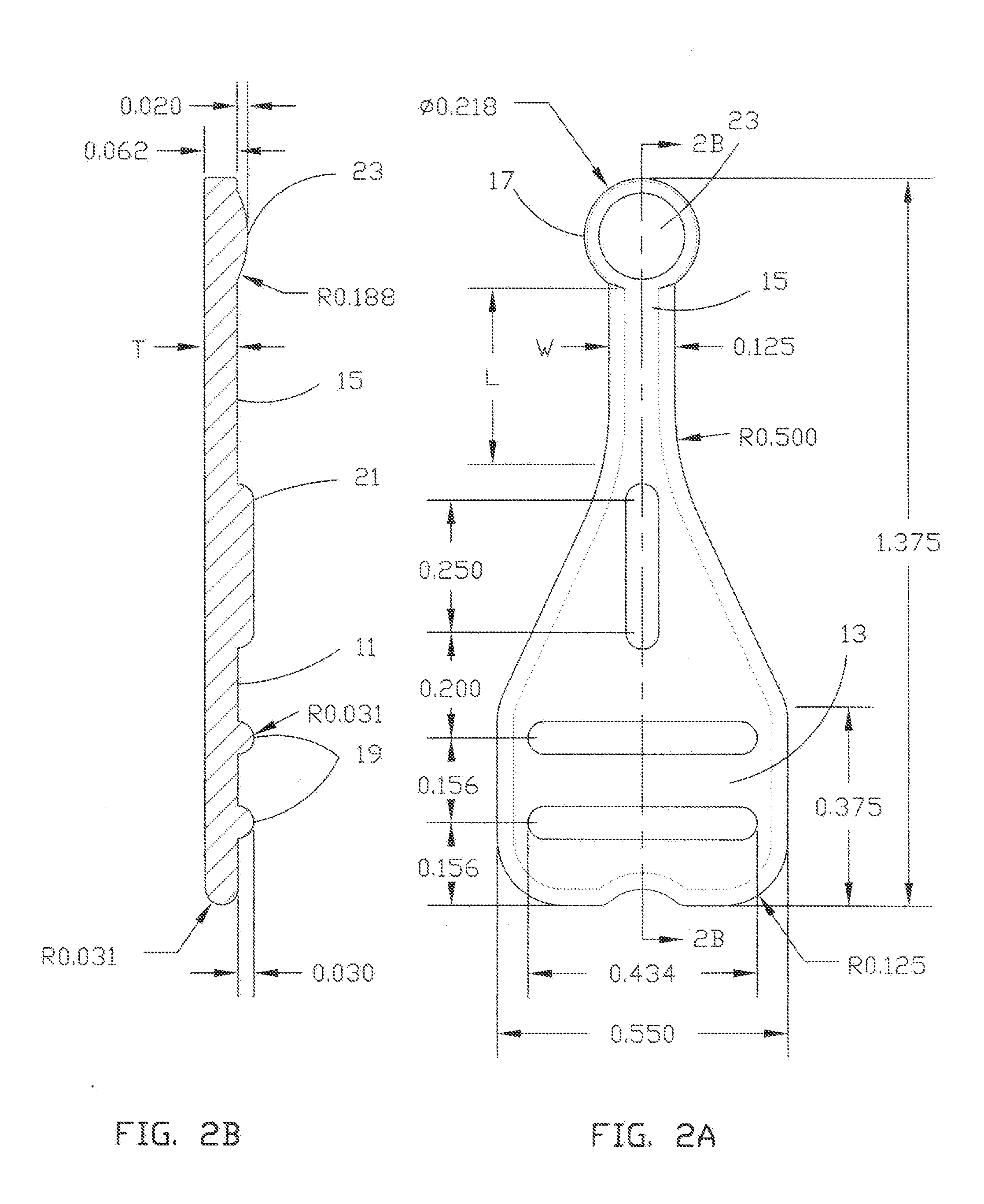Eye drop applicator and drop transfer method
- Summary
- Abstract
- Description
- Claims
- Application Information
AI Technical Summary
Benefits of technology
Problems solved by technology
Method used
Image
Examples
embodiment 26
[0087]FIG. 16A is a tracing of a 30 μL drop on embodiment 26 at 0° rotation;
[0088]FIG. 16B is a tracing of a 30 μL drop on the same embodiment at 90°;
[0089]FIG. 16C is a tracing of a 30 μL drop on the same embodiment at 180°;
[0090]FIG. 16D is a tracing of a 50 μL drop on the same embodiment at 0°;
[0091]FIG. 16E is a tracing of a 50 μL drop on the same embodiment at 90°;
[0092]FIG. 16F is a tracing of a 50 μL drop on the same embodiment at 180°;
[0093]FIG. 16G is a tracing of a 30 μL drop on embodiment no. 25 at 0° rotation;
[0094]FIG. 16H is a tracing of a 30 μL drop on the same embodiment at 90°;
[0095]FIG. 16I is a tracing of a 30 μL drop on the same embodiment at 180°;
[0096]FIG. 16J is a tracing of a 50 μL drop on the same embodiment at 0°;
[0097]FIG. 16K is a tracing of a 50 μL drop on the same embodiment at 90°; and
[0098]FIG. 16L is a tracing of a 50 μL drop on the same embodiment at 180°.
DETAILED DESCRIPTION
[0099]Making the invention will now be described with reference to a workin...
PUM
 Login to View More
Login to View More Abstract
Description
Claims
Application Information
 Login to View More
Login to View More - R&D
- Intellectual Property
- Life Sciences
- Materials
- Tech Scout
- Unparalleled Data Quality
- Higher Quality Content
- 60% Fewer Hallucinations
Browse by: Latest US Patents, China's latest patents, Technical Efficacy Thesaurus, Application Domain, Technology Topic, Popular Technical Reports.
© 2025 PatSnap. All rights reserved.Legal|Privacy policy|Modern Slavery Act Transparency Statement|Sitemap|About US| Contact US: help@patsnap.com



